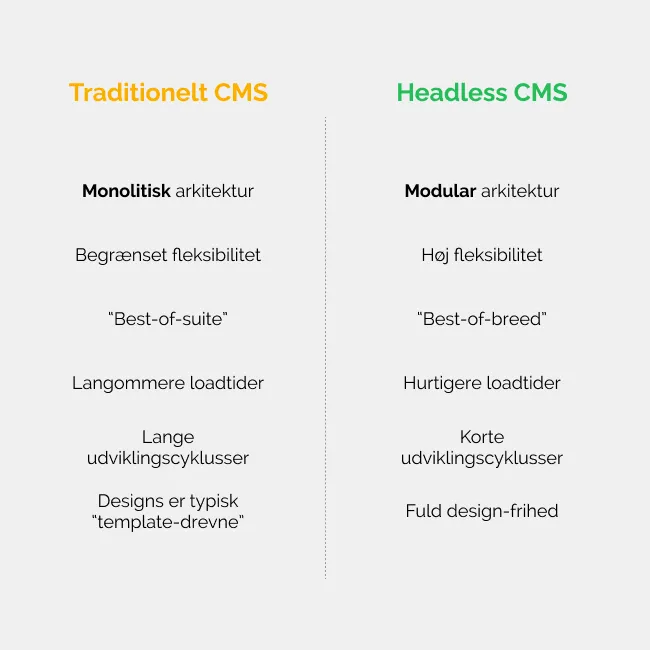
What is a headless CMS?
A headless CMS is characterized by separating your content (body) from the system where it is presented (head). This allows us to develop one or more high-speed websites or applications that all use data from your preferred CMS.
With a headless CMS (e.g., Umbraco), you can focus on enhancing processes around content creation, updating, collaboration, versioning (e.g., languages), and backups.
Typically, the CMS would also act as the engine for generating the visual user interface that users interact with. However, with a headless CMS, you can freely develop multiple different applications that use the data contained in the CMS, tailored to unique, platform-specific applications and sites.
The goal of a headless CMS is to provide you with a single place to manage your content, independent of the channels where the content is presented to users, whether on a webshop or in an app.

Headless CMS versus Traditional CMS: What is the Difference?
A Headless CMS is typically part of a microservice architecture, where all components perform clearly defined tasks (e.g., order management, login, checkout, etc.).
This represents a departure from the traditional CMS "monolithic mindset," where all functions are consolidated into a single system.
If you use a traditional CMS, you are generally limited to working within the constraints set by the CMS. With a Headless CMS, you have the flexibility to separate data from design, which offers you much greater flexibility.
Additionally, a traditional CMS typically has a website or webshop as the only possible output for your content, which again constitutes a technical limitation.

Advantages of a Headless CMS
There are many benefits to using a Headless CMS, including efficient content management, scalability, and faster time-to-market. However, our customers particularly appreciate two key advantages:
Flexibility: With a Headless CMS, you can quickly switch or add new presentation layers. Since the backend and frontend are separate, APIs ensure mutual independence, allowing you to remove or update individual components without affecting the entire platform. This flexibility lets you leverage new technologies without overhauling your entire system.
Performance: Large solutions experience improved performance with a Headless CMS compared to traditional monolithic systems. A cloud-hosted Headless CMS is often extremely fast, minimizing waiting times for your users.

Headless CMS with Umbraco
As an Umbraco Partner, we can build your next Headless CMS on one of the most popular open-source platforms available.
Umbraco's CMS has been on the market for over 15 years and is used on more than 700,000 websites worldwide. Umbraco describes their platform as structured, logical, and scalable, and we at PicoPublish agree with this assessment.
With a Headless CMS built on the Umbraco core, you get a streamlined and efficient back-end tool for managing your content. We will then help you build the right frontends for your primary channels.
Let's talk about you
You are the experts in your business. We are specialists in digital transformation and business optimization.
Every day, we help a large number of companies to create engaging web solutions, structure complex data and optimize workflows.
We want to help you!
